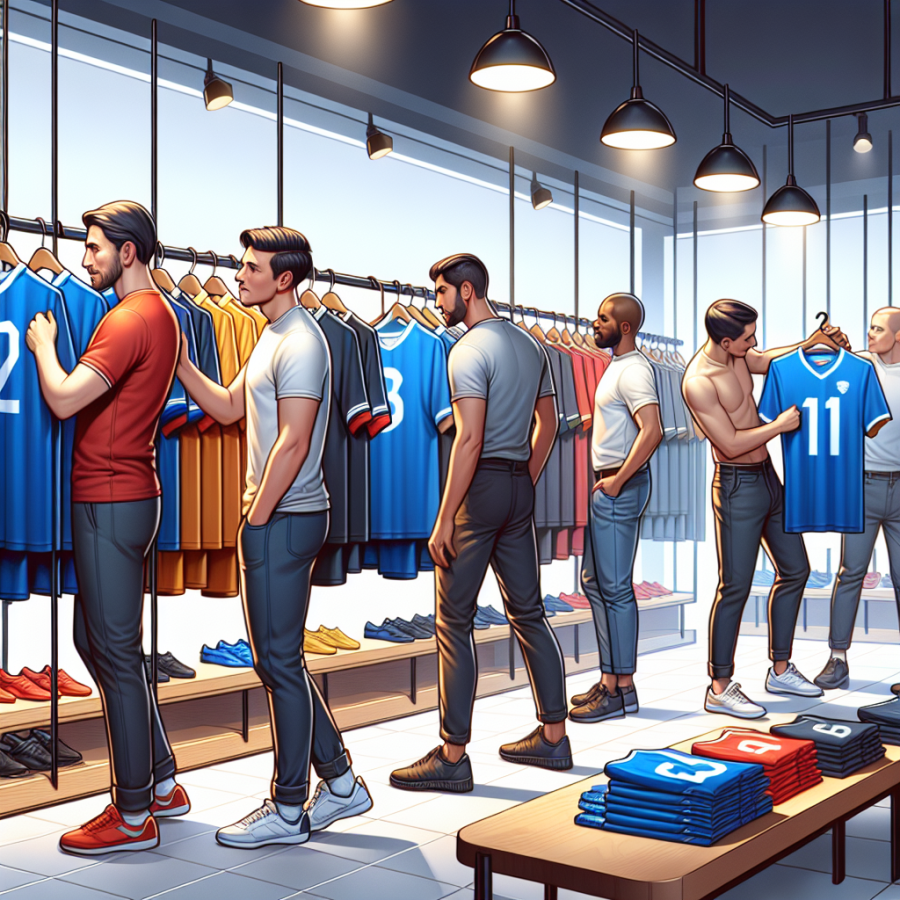The Reality Behind the "True to Size" Tag in Soccer Jerseys
When it comes to purchasing soccer jerseys, one ubiquitous term that often comes into play is "true to size." The label suggests that the jersey will fit exactly according to standard clothing sizes rather than running small or large. However, what we must question is whether the phrase holds up under scrutiny or whether it's just another marketing gimmick.
A closer look reveals that the "true to size" tag for soccer jerseys can lead to a range of interpretations and experiences. This is primarily because different brands and manufacturers have disparate sizing standards. For instance, a medium-sized Nike jersey might fit differently than a Puma or Adidas of the same labeled size. Thus, this lack of standardized sizing across brands shakes the essence of the "true to size" statement.
Also, soccer jerseys are designed to have a specific fit that differs from normal casual wear. Traditionally, they are usually engineered to fit snugly, hugging the body, facilitating ease of movement and helping players perform better on the field. However, this style might not suit everyone, especially those who don't fancy tight outfits. Therefore, a jersey meeting the brand's "true to size" standard might not correspond with the buyer's expectations or comfort level.
It's also essential to take note of different designs and styles within individual brands. For example, some brands offer replica jerseys that are designed to have a more relaxed fit for everyday wear. In contrast, authentic jerseys, built to mimic those worn on-field by professional players, have a tighter, athletic fit. The same brand manufactures both these styles, but the fit varies enormously, indicating that "true to size" isn't a one-size-fits-all promise.
Lastly, the factor of personal preference and individual body type is another aspect that strongly affects this topic. Some people may prefer their jerseys a bit loose for comfort, while others may want a snug fit for an authentic feel. Also, body proportions such as broad shoulders, long torso, or narrow waist can affect how a jersey fits despite its labeled size.
Therefore, the reality behind the "true to size" tag in soccer jerseys remains somewhat elusive and subjective. This tag does provide a basic guideline for potential buyers, but it cannot replace trying on the jersey or relying on exact measurements. As a consumer, it is always advised to review the brand's specific size chart, check customer reviews for insights on sizing issues, and comprehend the difference between various styles before purchasing.
Unveiling the Sizing Issue in Soccer Jerseys
In the world of soccer jerseys, size does matter. However, as many fans, players, and collectors have found out through personal experience, that perfect fit isn't always guaranteed. For this reason, a deep look into the “truth” behind soccer jersey sizing seems necessary. This post will unveil some common issues consumers face when buying soccer jerseys and why not all soccer jerseys are created equally.
First, we need to understand why the sizing disparities exist. The reality is that different manufacturers have slightly different specifications and standards. When you add in global differences in sizing guidelines and interpretations, a large number of variations can inevitably occur. For example, a size 'L' Puma jersey might fit differently than a size 'L' jersey from Adidas, due to differences in fabric, cut, and design among the brands.
Furthermore, soccer jerseys are designed to be a tighter fit than regular shirts to suit athletics' physical demands. They need to be streamlined to aid players' movements and prevent opponents from grabbing onto loose fabric. Therefore, many athletes prefer a snug fit, while fans aiming for comfort might find the same size too restrictive or uncomfortable.
Specifically illustrating the issue, there is a significant distinction between 'match jerseys' and 'stadium jerseys'. Match jerseys are made to fit professional athletes perfectly, and they are cut close to the body for performance purposes. In contrast, stadium jerseys are designed for everyday fans who require a more comfortable and relaxed fit. They are usually closer to standard t-shirt sizes, providing a more casual and loose feel. Therefore, fans may find themselves needing different sizes for match and stadium jerseys, adding to the confusion.
Replica and authentic jerseys are also not the same size. Replica jerseys are often designed to provide a more relaxed fit suitable for comfortable wear, whereas authentic jerseys, as worn by players on the field, feature a tighter, athletic fit. This distinction is crucial for consumers to know before they commit to a purchase, as a size 'M' authentic jersey will fit quite differently from a size 'M' replica jersey.
Furthermore, variations in soccer jersey sizes also exist between men’s, women’s, and youth sizes. Women's jerseys are often designed with a more fitted, curved cut to accommodate for the different body shapes, while youth jerseys are generally smaller and cut straighter.




